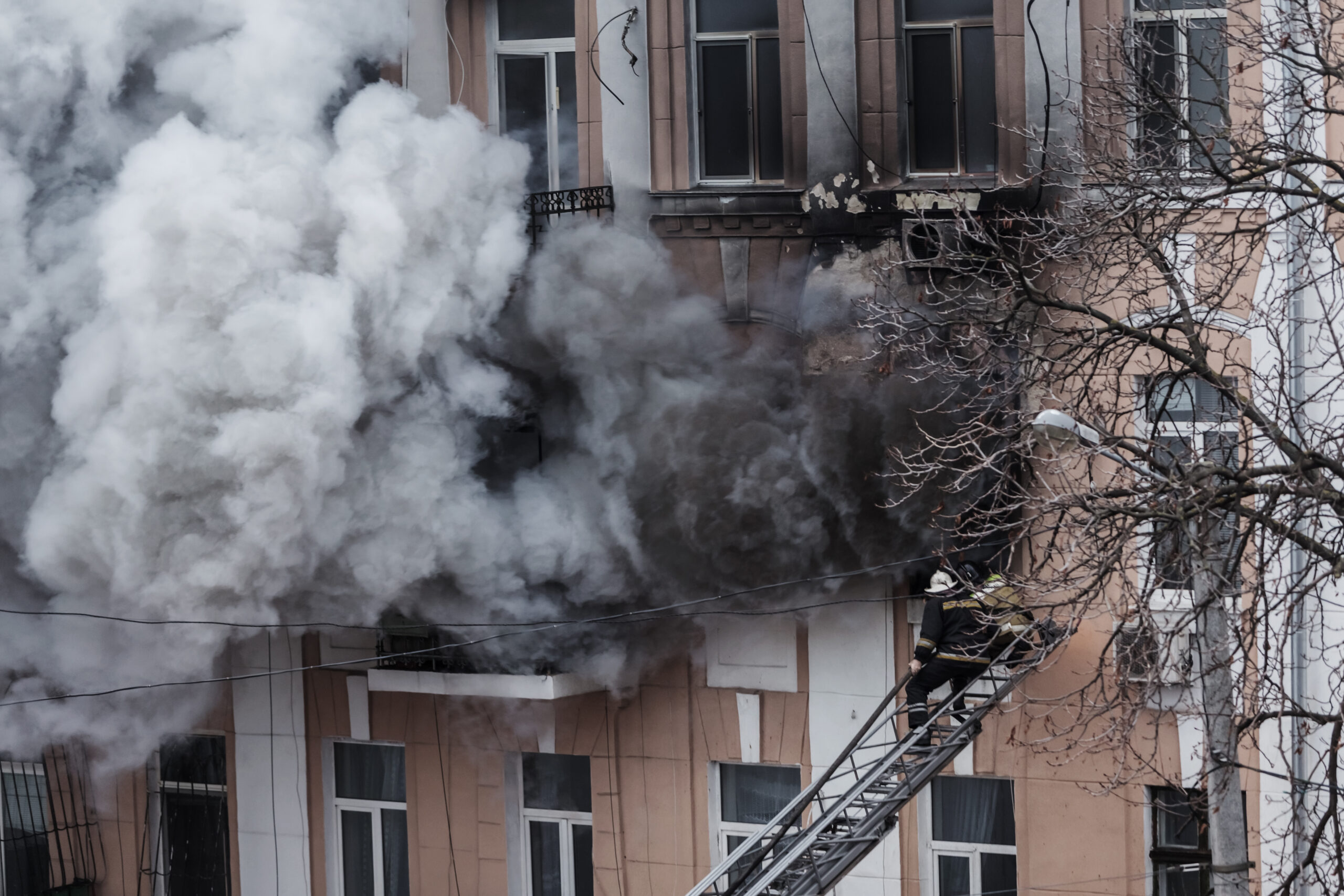
Peak season for California wildfires typically begins around June or July and lasts until late October or November, but fire-related events happen year-round. Stay up to date on active fires, investigations, lawsuits, and more.





Peak season for California wildfires typically begins around June or July and lasts until late October or November, but fire related-events happen year-round. Stay up to date on active fires, investigations, lawsuits, and more.

Wildfire smoke not only impacts the environment but poses significant risks to human health. It can reach far beyond fire-affected areas, impacting regions hundreds or even thousands of miles away.

Wildfire smoke not only impacts the environment but poses significant risks to human health. It can reach far beyond fire-affected areas, impacting regions hundreds or even thousands of miles away.




The state of California experiences more wildfires than any other state in the U.S. by a wide margin. According to the Insurance Information Institute, over 1.2 million California homes were at risk of extreme wildfires in 2022.
In the last five years, California has experienced an average annual burn of 2.3 million acres. Wildfires burn through vegetation, destroy buildings and homes, and often result in the tragic loss of lives.
The California Wildfire Lawsuit Info website aims to keep the public informed about fire litigation across the state, especially cases that involve utility companies. In recent years, these include investigations and lawsuits surrounding the Kincade, Mosquito, Dixie, and Camp Fire, among others.
As communities work to rebuild, litigators seek to recover damages and hold companies accountable for their roles in these fires. Regulatory supervision has also been put in place on several occasions to ensure utility companies take action to prevent future fires.
Information will continue to be updated as details emerge about the latest fires that have devastated Northern and Southern California. For more information on how to prepare, understand your risks, and recover from fire damage, explore our California wildfire resources.
The majority of California’s largest utility companies have been servicing the state for over 100 years. These privately-owned companies have been found responsible for numerous wildfires and are the subject of many ongoing investigations. In fact, overhead power lines have been named one of the most common ignition sources of large California wildfires since 1980.
The accumulation of wood fuel in forests, climate change, and higher population density that requires more electrical infrastructure have all been attributed to the increase in fire risk in California in the last approximately 10 years. However, utility company negligence remains at the center of the issue.
Utility companies have been accused of prioritizing profits over properly maintaining their often decades-old equipment, among other things. Improperly maintained vegetation near power lines and insufficient safety inspections have all been cited as underlying causes of some of the deadliest and most destructive fires in the state’s history.
Utility companies found to be what caused a California wildfire face financial and legal repercussions, as well as penalties from regulatory agencies amounting to losses in the millions and even billions of dollars. Individuals who have suffered personal injury or property damage, or have been impacted by a wildfire in other ways may be eligible to file a California wildfire claim and/or lawsuit.
Electrical corporations regulated by the CPUC: Pacific Gas & Electric (PG&E), Southern California Edison (SCE), San Diego Gas & Electric (SDG&E), Pacific Power (PacifiCorp), Bear Valley Electric Service, Liberty Utilities, Horizon West Transmission, and Trans Bay Cable

Mosquito Fire - PG&E
Dixie Fire - PG&E
Camp Fire - PG&E
Kincade Fire - PG&E
Ignited on October 23, 2019 in Sonoma County.
Burned 77,758 acres
Destroyed 374 structures
4 suffered minor injuries
Edgewood Fire - PG&E
Northern California, encompassing the diverse regions of the Klamath Mountains, Sierra Nevada, Redwood Forests, and fertile Central Valley, has been the venue of several significant wildfires in recent years, primarily in its northernmost, or Superior, counties.
Butte County has witnessed the devastating impact of two of the most catastrophic wildfires in California’s history: the Dixie and Camp Fires. And within a span of less than two months in 2022, Siskiyou County was hit by the McKinney and Mill Fires.
While parts of Northern California benefit from oceanic and alpine climates with cooler temperatures and regular precipitation during the wildfire season, other areas endure more arid conditions characterized by dryness, heat, and strong winds. These prime fire-conducive conditions are exacerbated by the infamous Diablo winds, particularly during the dryer fall months, which can reach speeds of up to 40 miles an hour.
The region’s main utility providers include Pacific Power (PacifiCorp) and Pacific Gas & Electric (PG&E), who have been found or alleged to be responsible for a number of Northern California fires that have devastated the region. These incidents have brought attention to the importance of proper maintenance, infrastructure resilience, and fire prevention measures.
The consequences of utility company negligence in Northern California have been severe, with lives lost, homes destroyed, and ecosystems damaged. The fires serve as grim reminders of the devastating consequences when companies fail to prioritize safety measures. Financial and legal consequences aim to mitigate these negligent acts, and Northern California wildfire settlement agreements seek fair compensation for affected individuals and businesses.
Southern California contains a wide range of geographical features, including stunning coastal areas, majestic mountain ranges, and expansive desert terrain. Just east of the coast lies the Transverse and Peninsular Ranges, which include the Santa Monica, San Bernadino and Santa Ana Mountains. These are juxtaposed by vast desert regions that are a part of the Mojave and the Colorado Desert.
Southern California’s climate is diverse, ranging from Mediterranean along the coast to arid desert conditions inland. The Santa Ana winds, notorious for their dryness and strength, originate inland and create critical weather conditions that exacerbate Southern California fire risk during the fall months.
Many fires in Southern California occur near the United States-Mexico border, such as the Border 32 Fire in San Diego County, named for being the thirty-second fire of 2022 in that area. Other coastal counties, including Orange, Los Angeles, and Ventura have dealt with the brunt of the wildfires over the years.
The region’s major utility providers include San Diego Gas & Electric (SDG&E) and Southern California Edison (SCE), the latter having been implicated in a number of wildfires that have devastated the region in recent years. SCE is under investigation for its potential role in the Silverado and Fairview Fires, while both companies have been found negligent in the past for failing to properly maintain their equipment and surrounding vegetation.
Financial and legal measures have been taken to hold these companies accountable and to stop more preventable wildfires from happening. Southern California wildfire settlement agreements have provided some semblance of justice and assistance to individuals and communities affected by the wildfires, and government agencies recognize the need for support and restitution in the face of such profound losses.

Fairview Fire - SCE
Silverado Fire - SCE
Border 32 Fire - SDG&E